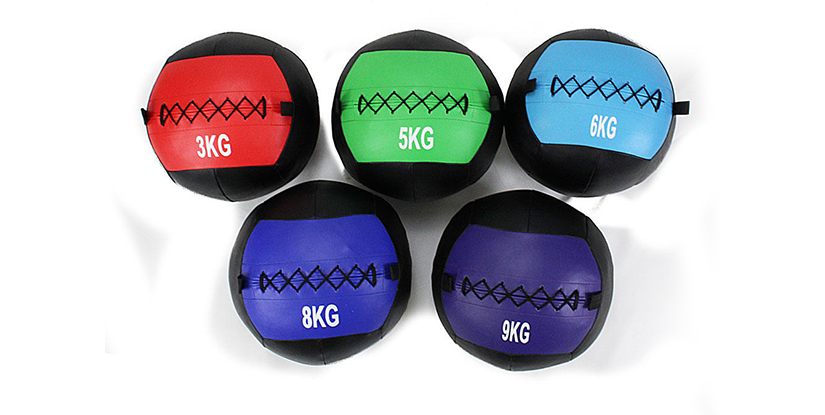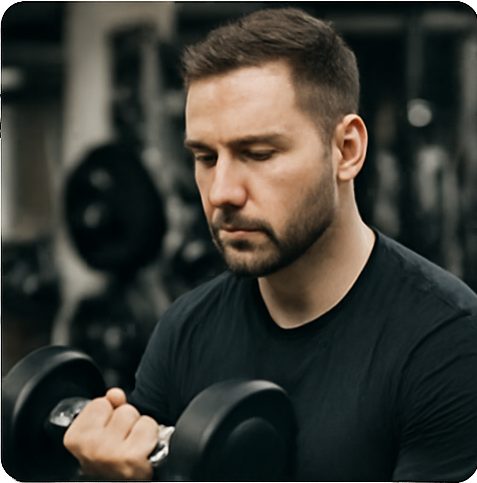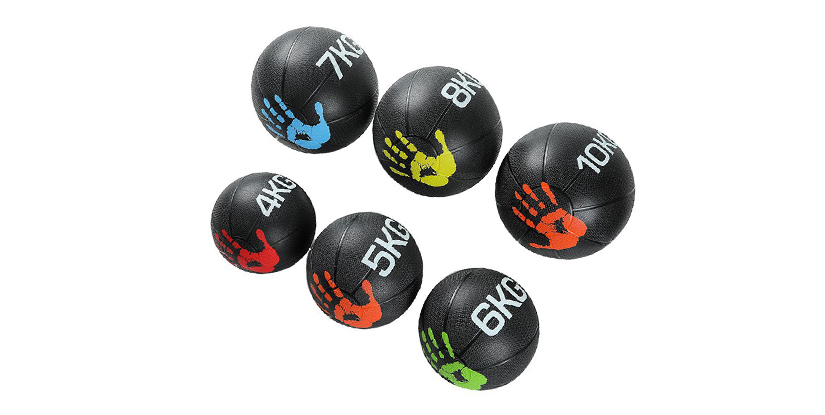Medicine ball weight seriously threw me off when I first got into gym training. I just wanted something solid for explosive work and core drills—but picking the right size? Way harder than I expected.
At first, I grabbed a ball that looked tough (rookie mistake). It was way too heavy, awkward as hell, and honestly kind of killed my motivation. I wanted to train for speed and rotation, not just survive every rep.
So I did what anyone does: hit up Reddit, scrolled like crazy, and found a ton of advice… most of it super mixed. Some said go light for speed. Others said heavier is better for power. I had no clue who to trust—or what actually made sense for my goals.
Eventually, I figured it out through trial, error, and a few sore slams. Here’s what I wish someone told me about choosing the right medicine ball weight.
Common Medicine Ball Weights
When I first walked into the gym and saw a full rack of medicine balls, I had no idea what the numbers meant. Some were marked in kg, others in lbs — total chaos. In most commercial gyms, though, you’ll usually see weights listed in kilograms, so I started getting used to that.
To save you the same headache I had, here’s a quick breakdown of common medicine ball weights, what they’re good for, and who they actually make sense for:
| Weight (kg) | Weight (lbs) | Who It’s For | Best Use |
|---|---|---|---|
| 2–3 kg | 4–7 lbs | Beginners, teens | Core work, stability drills |
| 4–6 kg | 9–13 lbs | Most adults | Rotational work, tennis/sprint drills |
| 7–9 kg | 15–20 lbs | Advanced lifters | Wall balls, partner throws, power work |
| 10+ kg | 22+ lbs | Stronger athletes | Heavy slams, cleans, brute core strength |
| 50 kg | 110 lbs | Strongman niche | Carries, slams, grip/endurance training |
Note: Some of these are slam balls, made for high-impact work like ball slams and cleans. Others are wall balls, which are softer and better for throws against a wall or target. Then there are your classic rubber med balls, which bounce — great for speed and reaction drills but not so great for slamming.
I didn’t realize any of this at first. I just grabbed the heaviest one I could lift and tried to go full send. Don’t do that. Knowing the difference saved my wrists—and my workouts.

How to Pick the Right Weight
This part was where I messed up the most.If you’re figuring out what weight to grab, here’s what I learned the hard way:
- For Beginners and General Fitness
When I was just getting into medicine ball training, I thought heavy = better. Spoiler: it wasn’t.
What actually helped? Starting light. Like 3–4 kg. It felt almost too easy at first, but I could finally focus on how I moved — not just surviving each rep.
The moment I went too heavy (I tried 8 kg right out the gate), I was all over the place. My form sucked, and my muscles weren’t doing the work — momentum was.
So if you’re new? Keep it light and clean.
- For Core and Ab Workouts
This one’s simple: lighter is better. Period.
When I use medicine balls for Russian twists, sit-up throws, or overhead slams to activate my core, anything heavier than 5 kg just turns into a mess. You’re not trying to max out here — you’re trying to feel your abs actually do the work.
My sweet spot? 4 kg. Enough to challenge me, but not so much that I’m jerking through the reps.
- For Speed & Power (Sprint/Tennis/Throws)
This one took some trial and error. I use med balls a lot for rotational throws and sprint drills — I even mixed them into tennis training.
At first, I tried a 6 kg ball. Not bad. But when I bumped up to 8 kg, I could feel my form breaking. It was too much weight, not enough speed.
Eventually, I settled on 5–6 kg for most explosive stuff. It gave me that clean, fast motion — and I could still go all-out without worrying about wrecking my shoulders.
- For Slams and Wall Balls
Okay, now we’re talking power.
For wall balls, I like a soft, grippy 9 kg. It hits hard but doesn’t bounce back in your face. For slam balls, I’ve gone up to 10 kg — the kind built to be destroyed on the ground.
One thing I learned fast: using a bouncy rubber med ball for slams is a bad idea. It’ll fight back. So yeah, get the right type for the job. Weight’s important, but material matters more here.
- The One I Bought That Was Too Much
Let me be real — I bought a 10 kg ball thinking I was a beast. “Double digits? Easy.” Nope.
I couldn’t control it. Everything felt sloppy. I avoided drills that needed precision and just stuck to brute-force slams. Fun for a while, sure. But I wasn’t actually training anything useful.
Eventually — and yeah, it took me a while — I ditched the ego and went for a 6 kg ball. Honestly? Total game-changer. Before that, I was just muscling through reps. But afterward, everything felt smoother, snappier, and actually effective. I could move fast, hit clean reps, and actually track my progress.
Now? I use that 6 kg ball for almost everything. It just works.
Other Things That Actually Affected My Choice
Picking the right medicine ball weight wasn’t just about strength. A few other things ended up mattering way more than I expected. Here’s what actually helped me figure it out.
- Can You Use % of Bodyweight?
I saw this tip online: “Use 10% of your bodyweight.” Sounded smart. I gave it a shot.
At around 80 kg bodyweight, that put me near an 8 kg ball. Decent for throws and power stuff, but honestly? Way too much for core drills or rotational work.
So yeah — using a % works kinda. It gave me a ballpark idea. But it didn’t replace testing in the gym. I still had to adjust based on the movement.
- Noise, Space, and Surface
This one hit me quick — slam balls are LOUD.
I was training mid-morning at the gym, and every time I did slams with a rubber ball, heads turned. Some people gave me that “really, dude?” look. It echoed like crazy on the hard floors.
Eventually, I switched to a dead bounce slam ball. Still heavy, still effective, but way less noise. I also stayed away from the dense rubber ones for wall balls — too bouncy and unpredictable.
If you’re training in a busy gym, soft-shell or no-bounce balls just make life easier. And yeah, the staff will thank you.
- Still Not Sure? Here’s What Helped Me Decide
When I wasn’t sure which weight to grab, I started using this quick checklist:
- Can I move it fast and clean?
- Can I finish my sets without breaking down halfway through?
- Can I feel the muscles working — not just flailing to finish?
If the answer to all three was “yes,” I knew I was close. If not? I swapped weights and tried again.
Honestly, that’s what helped the most. Not overthinking it. Just grabbing a few different weights and seeing what felt right in the actual workout.Once I stopped trying to muscle through the wrong weight, everything clicked. In a commercial gym setting, the right medicine ball weight makes all the difference — smooth, powerful, and way more fun.
Related Articles
Chose 8k Medicine Ball for My Gym Workouts
Why I Use a 10kg Medicine Ball for Power Training
Why I Don’t Use a 50kg Medicine Ball in My Gym

Hi, I’m the editor here at Leadman Fitness. We’re a manufacturer focused on producing top-quality barbells, plates, kettlebells, dumbbells, and strength training gear. I’ve been into sports and fitness for years, and I know my way around all kinds of gym equipment—both from using it and helping create it.
I spend a lot of time understanding the real problems people run into in the gym—whether it’s beginners trying to pick the right gear or experienced lifters looking for something more durable. I stay in close touch with our production team and talk directly with other equipment makers, so we’re always improving based on what real lifters and coaches are looking for.
What I share comes from hands-on experience—stuff that actually helps people train better, not just in theory, but in real gyms.
